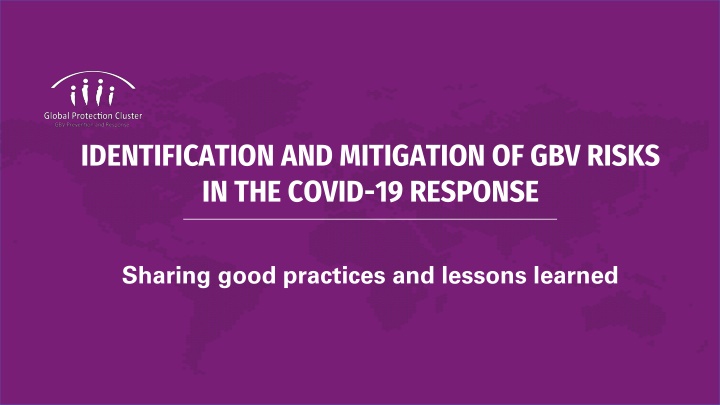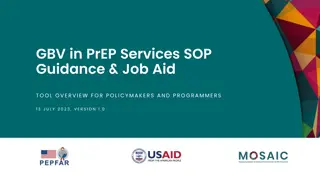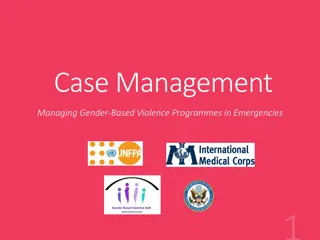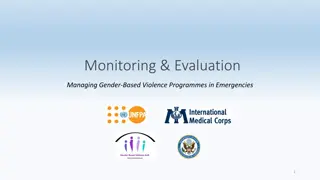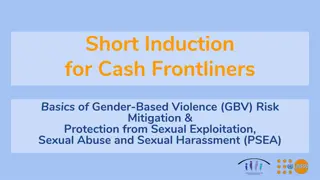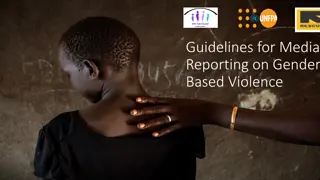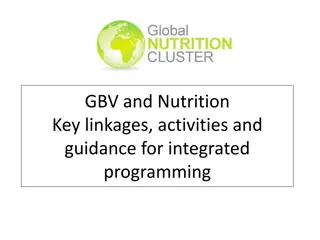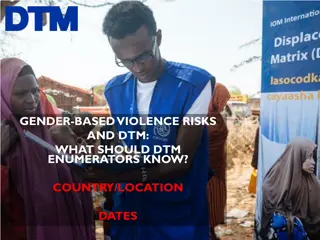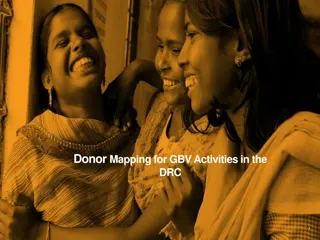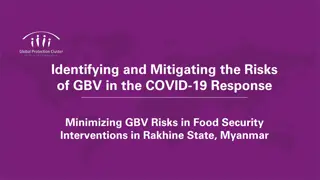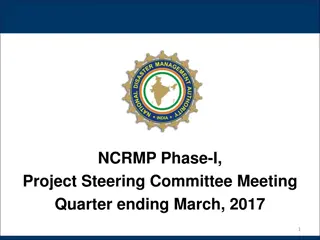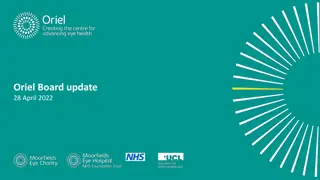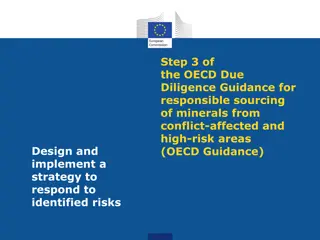IDENTIFICATION AND MITIGATION OF GBV RISKS IN THE COVID-19 RESPONSE
This project addresses GBV risks exacerbated by COVID-19 in Cameroon, focusing on displaced women and sex workers. Risks were identified through consultations, leading to targeted interventions including cash transfers and protective measures.
Download Presentation

Please find below an Image/Link to download the presentation.
The content on the website is provided AS IS for your information and personal use only. It may not be sold, licensed, or shared on other websites without obtaining consent from the author.If you encounter any issues during the download, it is possible that the publisher has removed the file from their server.
You are allowed to download the files provided on this website for personal or commercial use, subject to the condition that they are used lawfully. All files are the property of their respective owners.
The content on the website is provided AS IS for your information and personal use only. It may not be sold, licensed, or shared on other websites without obtaining consent from the author.
E N D
Presentation Transcript
IDENTIFICATION AND MITIGATION OF GBV RISKS IN THE COVID-19 RESPONSE Sharing good practices and lessons learned
Brief introduction to the project/challenge Brief introduction to the project/challenge o Report of the 1st case of COVID-19 in Cameroon in March 2020 o Establishment by the authorities of response and prevention measures with negative social and economic effects for vulnerable groups, especially in urban areas Responding to the effects of the pandemic and the economic consequences of prevention measures Some internally displaced women (IDPs) were already using sex work to meet their needs and those of their families The confinement and curfew introduced have pushed sex workers to work more underground and in increasingly precarious conditions COVID-19 Project: Prevention, Protection and Economic Recovery Mitigating the health and economic vulnerabilities in particular of 150 displaced women and girls and sex workers (TS) in the face of the COVID-19 pandemic in the Health District of Biyem Assi (Yaound ) Guidelines for Integrating Gender-based Violence Interventions in Humanitarian Action
Risks or problems of GBV Identified How was the problem identified by the project? CARE conducted separate consultations with target populations to identify: (i) the potential risks associated with receiving the cash transfer (ii) mitigating measures The main risks identified o Money extortion/phone theft by young boys and hostel/hotel managers o Pressure by landlords/landlords of rental houses-rent increase o Social tensions within the community - between host and displaced TS in particular These are risks that existed before but made worse by COVID : o Presence of security forces to enforce the curfew and crude people o Low/absent civilian population at night reinforcing the vulnerability of TS o Willingness to compensate for economic losses due to confinement measures Guidelines for Integrating Gender-based Violence Interventions in Humanitarian Action
GBV Risks and Issues Addressed How the risks/problems of GBV were treated Combination of use of transfer mechanism (mobile money & cash) Consultation with participants to define the distribution site for protective equipment and cash Establishment of a confidential data management system (unique code) Sensitization of beneficiaries on financial management Establishment of a feedback and complaints mechanism with a hotline Tools/guides developed and/or used CARE rapid gender analysis tools IEC Safer Cash toolkit Protocol for managing data and distributing transfers according to the delivery mechanism chosen Dialogue on cash transfer and associated risks Guidelines for Integrating Gender-based Violence Interventions in Humanitarian Action
Results and/or Key Lessons Learned For a very short-term project with a low number of recipients, the option of making transfers directly through a mobile operator, without establishing a contract, was most effective The inclusion of actions to prevent and manage cases of GBV was a positive step in mitigating the risks of GBV. However, for these services to be used more, it will be necessary to create a dynamic of trust from the start, in particular by rapidly raising awareness among beneficiaries The implementation of distribution activities associating the two categories of TS (IDP & host) has helped to improve relations between them Avoiding assumptions/hypotheses: - The risks identified as important are not those that the project team most expected - The project was limited to the "sensitive" and not "transformative" gender concerning the involvement of men (short duration of the project and the beneficiaries' desire for discretion). However, they were mobilized for a focus group during the Post Distribution Monitoring and we realized that for some they are afraid of seeing their wives receive an income higher than theirs. Guidelines for Integrating Gender-based Violence Interventions in Humanitarian Action
